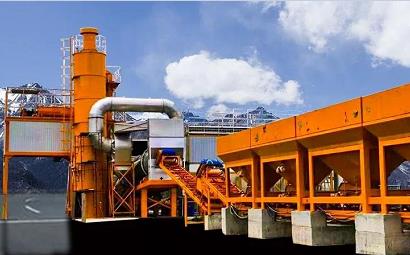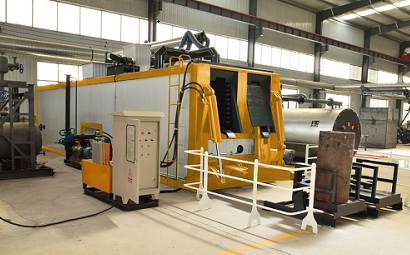The difference between asphalt penetration layer, tack layer and seal layer!
The construction requirements of asphalt penetration layer are as follows: within 6 hours after the base layer is rolled, the penetration oil must be sprayed in time. The penetration oil uses emulsified asphalt PC-2, and its dosage can be determined by trial spraying according to the standard of 1.5 liters per square meter, and the penetration depth must not be less than 5mm. After spraying the penetration oil, the emulsified asphalt PC-1 lower seal layer needs to be paved, where the emulsified asphalt dosage is 1.0 liters per square meter, the aggregate particle size is 0.5-1cm, and the thickness should not be less than 0.6 cm. Before paving asphalt concrete, the tack oil must be sprayed on the upper and lower layers of the lower seal layer, as well as on the sides of curbs, rainwater outlets, inspection wells and other structures. The tack oil uses emulsified asphalt PC-3, and the dosage is 0.5 liters per square meter.

In rainy and humid areas, if the asphalt surface layer of expressways and first-class highways has a large porosity and there is a possibility of serious water seepage, or if the asphalt surface layer cannot be paved in time after the base layer is paved and vehicles need to pass, it is appropriate to pave the lower seal layer after spraying the permeable layer.
It is necessary to strictly distinguish between the lower seal layer and the permeable layer oil: the purpose of the lower seal layer is to seal the surface, and it does not necessarily have to penetrate; the permeable layer oil requires penetration to a certain depth. There are also large differences in their functions and purposes. In some current projects, since the permeable layer oil sprayed on the semi-rigid base cannot penetrate, aggregates and sand are sprinkled on the permeable layer oil as the lower seal layer. This may play a sealing role, but it cannot replace the permeable layer oil.
Slurry seal is usually used for preventive maintenance of second-class and lower-class highways, and is also suitable for the lower seal layer of newly built highways.
The lower seal layer is set on the surface of the semi-rigid base. Its functions are: first, to protect the base from being damaged by construction vehicles, which is conducive to the curing of semi-rigid materials; second, to prevent rainwater from seeping into the structural layer below the base; third, to strengthen the combination between the surface layer and the base. There are many ways to make the lower seal layer. Practice shows that a single layer of asphalt is one of the most economical and effective methods.
The functions and applicable conditions of asphalt penetration layer, tack layer and seal layer are as follows:
(1) Function and applicable conditions of penetration layer
The function of penetration layer is to make the asphalt surface layer and non-asphalt material base layer well bonded. It is a thin layer that penetrates the surface of the base layer by sprinkling emulsified asphalt, coal tar or liquid asphalt on the base layer.
When the following conditions are met, penetration layer asphalt should be sprinkled:
① Graded gravel and graded crushed stone base of asphalt pavement.
② Cement, lime, fly ash and other inorganic binders stabilize soil.
③ Penetration layer asphalt must be sprinkled on the semi-rigid base of granular material.
(2) Function and applicable conditions of tack layer
The function of tack layer is to strengthen the bonding between asphalt layers and between asphalt layers and cement concrete pavement by sprinkling a thin layer of asphalt material.
The tack coat asphalt should be poured in the following cases:
① The asphalt layer below the double-layer or three-layer hot-mix hot-laid asphalt mixture pavement has been contaminated before the upper layer is paved.
② An asphalt layer is added on the old asphalt pavement layer.
③ An asphalt surface layer is laid on the cement concrete pavement.
④ The sides of curbs, rainwater inlets, inspection wells, etc. that are in contact with the newly laid asphalt mixture.
(3) Function and applicable conditions of the seal layer
The function of the seal layer is to seal the surface gaps and prevent moisture from entering the surface layer or base layer. The layer paved on the surface layer is called the upper seal layer, and the layer paved below the surface layer is called the lower seal layer.
The upper seal layer should be laid on the asphalt surface layer in the following cases:
① The gaps in the asphalt surface layer are large and water permeability is serious.
② An old asphalt pavement with cracks or repairs.
③ An old asphalt pavement that needs to be paved with a wear layer to improve the anti-skid performance.
④ New asphalt pavement that needs to be paved with a wear layer or protective layer.
(4) The role and applicable conditions of slurry seal
The role of slurry seal: It is an asphalt seal formed by evenly spreading a flowing asphalt mixture made of appropriately graded stone chips or sand, fillers (cement, lime, fly ash, stone powder, etc.) with emulsified asphalt, admixtures and water in a certain proportion on the pavement.
The lower seal layer should be laid under the asphalt surface layer when one of the following conditions is met:
① Located in a rainy area and the asphalt surface layer has large gaps and severe water seepage.
② After the base layer is paved, the asphalt surface layer cannot be paved in time, and traffic must be opened.
 Albanian
Albanian  Russian
Russian  Arabic
Arabic  Amharic
Amharic  Azerbaijani
Azerbaijani  Irish
Irish  Estonian
Estonian  Odia (Oriya)
Odia (Oriya)  Basque
Basque  Belarusian
Belarusian  Bulgarian
Bulgarian  Icelandic
Icelandic  Polish
Polish  Bosnian
Bosnian  Persian
Persian  Afrikaans
Afrikaans  Tatar
Tatar  Danish
Danish  German
German  French
French  Filipino
Filipino  Finnish
Finnish  Frisian
Frisian  Khmer
Khmer  Georgian
Georgian  Gujarati
Gujarati  Kazakh
Kazakh  Haitian Creole
Haitian Creole  Korean
Korean  Hausa
Hausa  Dutch
Dutch  Kyrgyz
Kyrgyz  Galician
Galician  Catalan
Catalan  Czech
Czech  Kannada
Kannada  Corsican
Corsican  Croatian
Croatian  Kurdish (Kurmanji)
Kurdish (Kurmanji)  Latin
Latin  Latvian
Latvian  Lao
Lao  Lithuanian
Lithuanian  Luxembourgish
Luxembourgish  Kinyarwanda
Kinyarwanda  Romanian
Romanian  Malagasy
Malagasy  Maltese
Maltese  Marathi
Marathi  Malayalam
Malayalam  Malay
Malay  Macedonian
Macedonian  Maori
Maori  Mongolian
Mongolian  Bengali
Bengali  Myanmar (Burmese)
Myanmar (Burmese)  Hmong
Hmong  Xhosa
Xhosa  Zulu
Zulu  Nepali
Nepali  Norwegian
Norwegian  Punjabi
Punjabi  Portuguese
Portuguese  Pashto
Pashto  Chichewa
Chichewa  Japanese
Japanese  Swedish
Swedish  Samoan
Samoan  Serbian
Serbian  Sesotho
Sesotho  Sinhala
Sinhala  Esperanto
Esperanto  Slovak
Slovak  Slovenian
Slovenian  Swahili
Swahili  Scots Gaelic
Scots Gaelic  Cebuano
Cebuano  Somali
Somali  Tajik
Tajik  Telugu
Telugu  Tamil
Tamil  Thai
Thai  Turkish
Turkish  Turkmen
Turkmen  Welsh
Welsh  Uyghur
Uyghur  Urdu
Urdu  Ukrainian
Ukrainian  Uzbek
Uzbek  Spanish
Spanish  Hebrew
Hebrew  Greek
Greek  Hawaiian
Hawaiian  Sindhi
Sindhi  Hungarian
Hungarian  Shona
Shona  Armenian
Armenian  Igbo
Igbo  Italian
Italian  Yiddish
Yiddish  Hindi
Hindi  Sundanese
Sundanese  Indonesian
Indonesian  Javanese
Javanese  Yoruba
Yoruba  Vietnamese
Vietnamese  Hebrew
Hebrew  Chinese (Simplified)
Chinese (Simplified)






